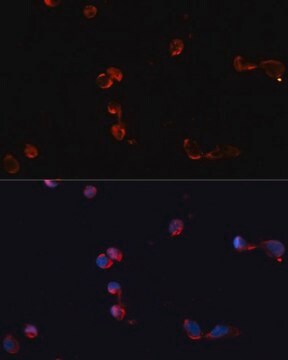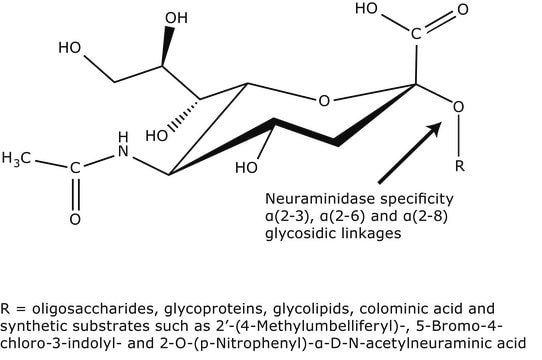C9336
Anti-Chloramphenicol Acetyl Transferase (CAT) antibody produced in rabbit

IgG fraction of antiserum, buffered aqueous solution
Sinônimo(s):
CAT Antibody - Anti-Chloramphenicol Acetyl Transferase (CAT) antibody produced in rabbit, Cat Antibody
About This Item
Produtos recomendados
fonte biológica
rabbit
Nível de qualidade
conjugado
unconjugated
forma do anticorpo
IgG fraction of antiserum
tipo de produto de anticorpo
primary antibodies
clone
polyclonal
forma
buffered aqueous solution
peso molecular
antigen 26 kDa
validação aprimorada
recombinant expression
Learn more about Antibody Enhanced Validation
técnica(s)
indirect immunofluorescence: 10 μg/mL using eukaryotic cells transfected with a plasmid bearing the CAT gene
western blot: 10 μg/mL using eukaryotic cells transfected with a plasmid bearing the CAT gene
Condições de expedição
dry ice
temperatura de armazenamento
−20°C
modificação pós-traducional do alvo
unmodified
Categorias relacionadas
Descrição geral
Especificidade
Imunogênio
Aplicação
- immunoblotting
- indirect immunofluorescence
- immunofluorescence microscopy
Ações bioquímicas/fisiológicas
Anti-Chloramphenicol Acetyl Transferase (CAT) antibody is specific for bacterial CAT and recombinant CAT expressed in transfected eukaryotic cells (a predominant band of approx. 26 kD). Staining of CAT by the antibody is inhibited by the bacterial CAT antigen in cells transfected with CAT.
forma física
Exoneração de responsabilidade
Não está encontrando o produto certo?
Experimente o nosso Ferramenta de seleção de produtos.
Código de classe de armazenamento
10 - Combustible liquids
Classe de risco de água (WGK)
WGK 3
Ponto de fulgor (°F)
Not applicable
Ponto de fulgor (°C)
Not applicable
Certificados de análise (COA)
Busque Certificados de análise (COA) digitando o Número do Lote do produto. Os números de lote e remessa podem ser encontrados no rótulo de um produto após a palavra “Lot” ou “Batch”.
Já possui este produto?
Encontre a documentação dos produtos que você adquiriu recentemente na biblioteca de documentos.
Nossa equipe de cientistas tem experiência em todas as áreas de pesquisa, incluindo Life Sciences, ciência de materiais, síntese química, cromatografia, química analítica e muitas outras.
Entre em contato com a assistência técnica




